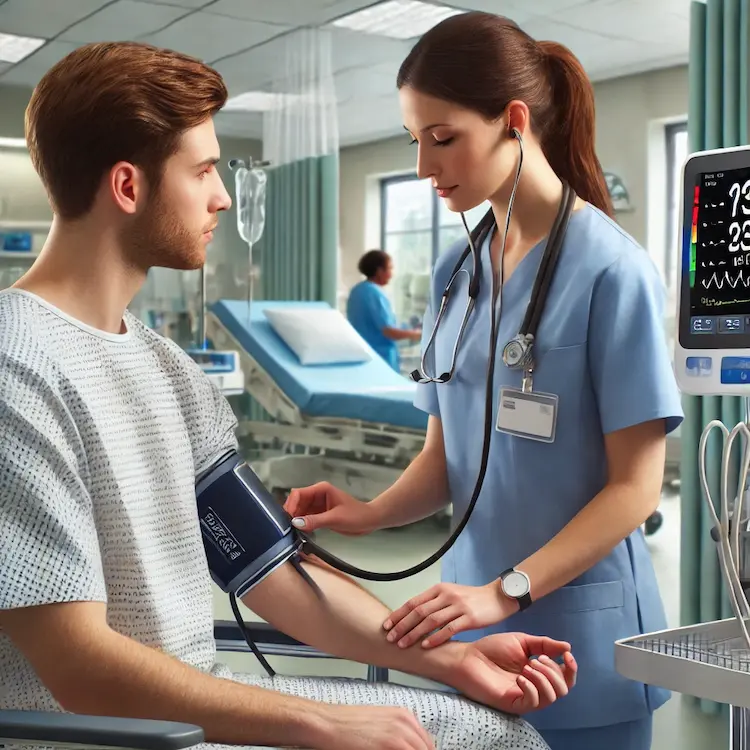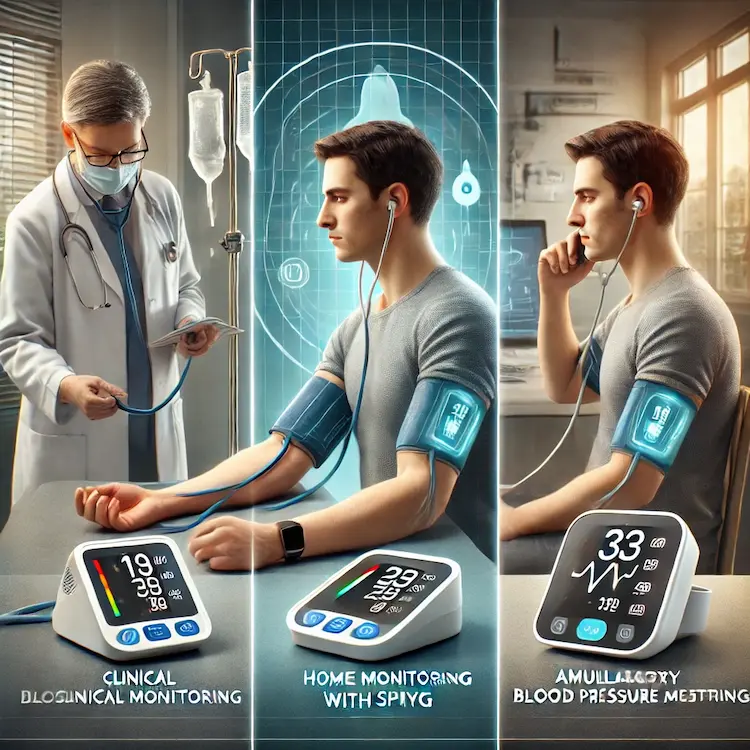Post-surgical hypertension is a common but often overlooked condition that can lead to severe complications if left unchecked. Blood pressure fluctuations after surgery can result from pain, stress, anesthesia effects, fluid imbalances, or underlying conditions. Regular monitoring using clinically proven tools like Sphyg can help detect abnormalities early and prevent life-threatening complications such as stroke, heart failure, or kidney damage.
This article explores the importance of monitoring post-surgical hypertension, compares different blood pressure monitoring methods, and provides practical guidance on how patients and healthcare providers can manage this condition effectively.
Understanding Post-Surgical Hypertension
Causes of High Blood Pressure After Surgery
Postoperative hypertension can occur due to several reasons, including:
- Pain and Stress: Surgery triggers the body’s stress response, leading to increased catecholamine levels, which elevate blood pressure.
- Fluid Overload or Depletion: Intravenous fluids administered during surgery can cause volume overload, while dehydration may lead to hypovolemia-induced hypertension.
- Medication Side Effects: Drugs such as vasopressors, steroids, or nonsteroidal anti-inflammatory drugs (NSAIDs) can contribute to elevated blood pressure.
- Preexisting Hypertension: Patients with a history of high blood pressure are more likely to experience postoperative spikes.
- Anesthesia Recovery: Some anesthetics affect vascular resistance and heart rate, causing transient hypertension post-surgery.
Health Risks of Uncontrolled Postoperative Hypertension
If left unmanaged, post-surgical hypertension can lead to:
- Cardiovascular Events: Increases the risk of heart attack, stroke, and arrhythmias.
- Internal Bleeding: High pressure can disrupt surgical wounds and lead to internal hemorrhage.
- Organ Damage: Can impair kidney function, affect brain perfusion, and cause long-term vascular damage.
- Extended Hospital Stay: Delays in controlling blood pressure may prolong recovery and increase healthcare costs.
Comparing Blood Pressure Monitoring Methods
Clinical Blood Pressure Monitoring
Pros:
- Conducted by medical professionals for accurate readings.
- Immediate response in case of abnormal values.
Cons:
- Requires hospital visits or in-patient monitoring.
- May not reflect real-world blood pressure fluctuations.
Home Blood Pressure Monitors
Devices like Sphyg allow patients to track their blood pressure regularly at home.
Pros:
- Enables continuous monitoring without hospital visits.
- Provides multiple readings over time for trend analysis.
- Helps in adjusting medications based on real-time data.
Cons:
- Requires patient education to ensure proper use.
- Some lower-quality monitors may provide inaccurate readings.
Ambulatory Blood Pressure Monitoring (ABPM)
A 24-hour monitoring method using a wearable device that records blood pressure at intervals throughout the day.
Pros:
- Offers comprehensive data, including nighttime fluctuations.
- More accurate than single-time clinical readings.
Cons:
- Can be uncomfortable for patients.
- Not always covered by insurance or available in all settings.
Comparison Table: Blood Pressure Monitoring Methods
| Method | Accuracy | Convenience | Cost | Best For |
|---|---|---|---|---|
| Clinical Monitoring | High | Low (requires hospital visit) | Moderate to High | Hospitalized patients |
| Home Monitoring (Sphyg, Digital Monitors) | Moderate to High (if properly used) | High | Low to Moderate | Post-surgical patients managing at home |
| Ambulatory BP Monitoring | Very High | Moderate | High | Patients with fluctuating BP requiring 24-hour tracking |
Best Practices for Monitoring Post-Surgical Hypertension
Choosing the Right Monitor
- Accuracy Matters: Use validated, clinically approved devices like Sphyg.
- Cuff Size Consideration: Ensure proper cuff fitting for accurate readings.
- Memory and Connectivity: Devices with data storage and Bluetooth capabilities help in tracking trends.
Optimal Blood Pressure Measurement Techniques
- Sit in a Restful Position: Keep feet flat on the ground and back supported.
- Use the Same Arm Consistently: Readings should be taken on the same arm for consistency.
- Take Multiple Readings: Measure blood pressure at least twice per session and average the results.
Monitoring Frequency and When to Seek Help
- First Week After Surgery: Measure blood pressure 3-4 times daily.
- After the First Month: Reduce to twice daily, unless advised otherwise.
- Emergency Indicators:
- BP consistently above 180/120 mmHg – seek immediate medical attention.
- Symptoms like chest pain, severe headache, or shortness of breath require urgent evaluation
Lifestyle Adjustments to Control Post-Surgical Hypertension
Diet and Hydration
- Reduce sodium intake to prevent fluid retention.
- Stay hydrated but avoid excessive fluid consumption.
Medication Adherence
- Follow the prescribed regimen and avoid skipping doses.
- Report any side effects to the doctor promptly.
Stress and Pain Management
- Use relaxation techniques like deep breathing or meditation.
- Pain control is essential, as untreated pain can elevate blood pressure.
Physical Activity
- Light movement such as walking promotes circulation and prevents hypertension.
- Avoid strenuous exercises until medically cleared.
Conclusion
Regular monitoring of post-surgical hypertension is crucial for preventing serious complications. Advanced home monitoring devices like Sphyg empower patients to track their blood pressure efficiently, reducing hospital visits while improving long-term health outcomes. Patients recovering from surgery should integrate routine blood pressure checks into their daily routine, follow their doctor’s recommendations, and make necessary lifestyle adjustments to ensure stable recovery.
Key Takeaways
- Post-surgical hypertension can result from pain, medication effects, and fluid imbalances.
- Regular monitoring with clinically validated tools like Sphyg helps prevent complications.
- Different methods of blood pressure monitoring exist, each with advantages and limitations.
- Lifestyle changes such as diet, stress management, and adherence to medication play a crucial role.
- Seek medical help for persistently high readings or symptoms of a hypertensive crisis.
Actionable Recommendations
- Use a validated home BP monitor like Sphyg for routine checks.
- Maintain a BP log to share with healthcare providers.
- Avoid high-sodium foods and stay adequately hydrated.
- Manage pain effectively to reduce stress-related BP spikes.
- Follow up with a doctor if readings are consistently high or symptoms appear.




